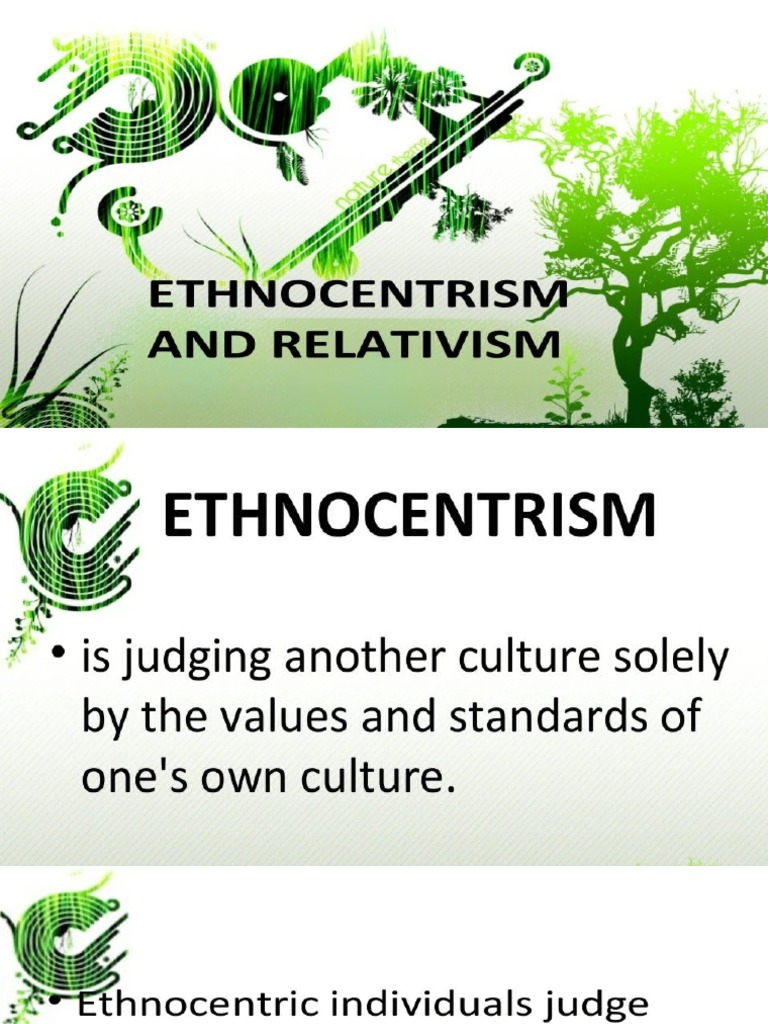In the multifaceted realm of cultural studies, two concepts often arise that shape our understanding of societies and their practices: ethnocentrism and cultural relativism. These terms, though distinct in their implications, serve as lenses through which we can examine the kaleidoscope of human experience. Consider ethnocentrism as a towering mountain, its peak obscured by clouds of bias. Meanwhile, cultural relativism is like a flowing river, meandering through various landscapes, adapting to the contours it encounters. Together, these ideas invite us to explore the rich tapestry of human cultures.
Ethnocentrism refers to the inclination to view one’s own culture as the central and superior reference point for evaluating other cultures. This perspective often leads to a biased interpretation of differences, with individuals believing their cultural norms and practices are universally applicable. Ethnocentric people may react to foreign customs with skepticism or disdain, perceiving them as curious oddities—a misguided sense of cultural superiority that can breed misunderstanding and conflict.
This phenomenon can be likened to the phenomenon of a singular color dominating a palette. When one’s worldview is dominated by the hues of their culture, the vibrancy and diversity of other cultures can be overlooked. This narrow perception can create barriers to social cohesion and empathy, reinforcing stereotypes and fostering attitudes of intolerance. Ethnocentrism is often entrenched in a society’s identity, manifesting through language, customs, and institutions that uphold a specific culture over others.
In contrast, cultural relativism champions the principle that cultural practices should be understood based on their own context rather than judged against another culture’s standards. This perspective underscores that values and norms are inextricably linked to their specific social, historical, and environmental contexts. Cultural relativists adopt an open-minded approach—like embracing a mosaic where each piece holds its own unique beauty, contributing to a larger narrative.
The significance of cultural relativism rises sharply in an increasingly globalized world, where interactions between diverse cultures are both frequent and inevitable. By applying cultural relativism, one can appreciate that no single culture holds the monopoly on what is deemed ‘normal’ or ‘correct.’ This paradigm encourages individuals to delve deeper, seeking to understand the underlying reasons for practices that may initially appear baffling or untenable.
However, one must also tread carefully with cultural relativism. An unwavering commitment to this perspective can lead to an ethical quagmire when confronted with practices that might contravene universal human rights—such as sexism, racism, or violence. Navigating these waters requires a balance between appreciation for cultural diversity and critical engagement with practices that may harm individuals or groups. Being a cultural relativist does not necessitate blind acceptance; rather, it advocates for a nuanced understanding of cultural context paired with an awareness of ethical standards.
Visualizing ethnocentrism and cultural relativism as two poles on a spectrum can provide clarity. Ethnocentrism stands at one end, rigid and unyielding, while cultural relativism occupies the opposite end, fluid and adaptive. Most individuals will find themselves somewhere along this spectrum, fluctuating their perspectives depending on context. Striking a balance between these two views is critical in fostering intercultural dialogue and understanding.
Many people may find themselves unaware of their own ethnocentric biases. This reflective ignorance can lead to inadvertent cultural arrogance, as judgments are made through a skewed lens. In a world where globalization and intercultural interactions increase, unexamined ethnocentrism can result in discord and conflict. For example, an ethnocentric view might undermine international cooperation by dismissing the validity of cultural practices deeply rooted in another society’s history.
Conversely, cultural relativism, when embraced fully, facilitates empathy. It encourages individuals to step into others’ shoes, experiencing cultural practices from the inside out. This form of understanding becomes particularly significant in instances of cultural exchange or conflict resolution. Genuine listening and learning lead to the dismantling of stereotypes and the building of solidarity among diverse groups.
Cultural anthropologists and sociologists alike caution that while cultural relativism promotes acceptance, it also demands critical engagement. To truly embody cultural relativism, one must continually reflect on their own cultural biases and the complexities within other cultures. Acknowledging the richness of a culture does not absolve it from critique. This delicate balance is akin to tending a garden; each plant is essential, yet some may require pruning to ensure the health of the overall ecosystem.
In summary, the distinction between ethnocentrism and cultural relativism lies at the intersection of personal bias and cultural appreciation. Ethnocentrism constrains understanding, whereas cultural relativism opens doors to expansive insights. As we navigate our interconnected world, remaining mindful of these two concepts empowers us to foster respect and understanding among diverse cultures, ultimately contributing to a more inclusive global community. In the end, embracing the myriad of cultural expressions enriches our shared human experience, propelling us forward in a world where understanding is as essential as survival.
